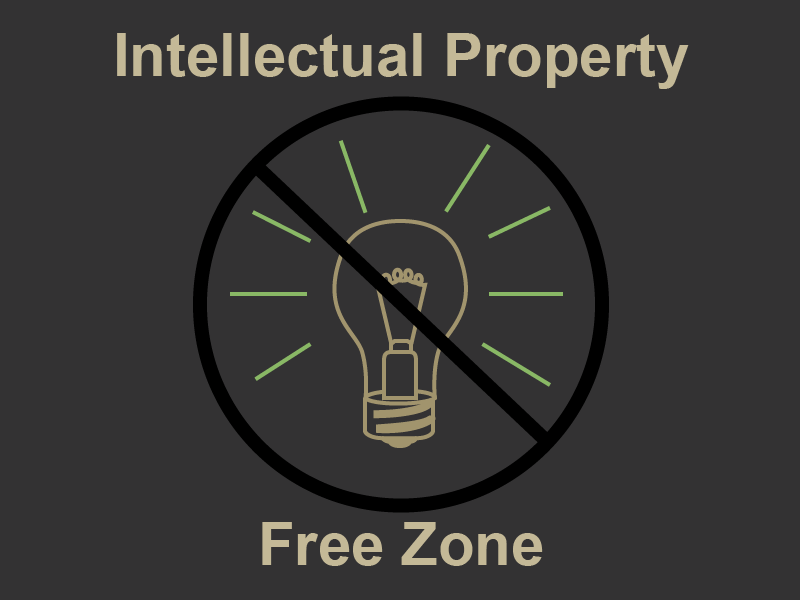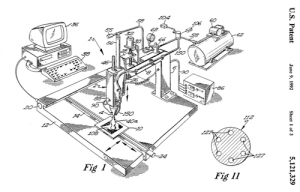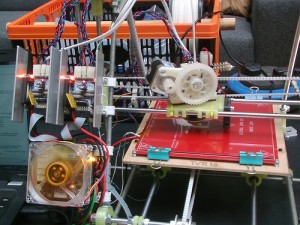The debate over intellectual property law has consistently shifted throughout the history of the United States with people on both sides of the argument providing extensive justification for why the concept of intellectual property should or shouldn’t exist. To add to the confusion, there are numerous people who stand somewhere in the middle and provide wide-ranging solutions for how we should handle patent and copyright law. There’s no question that this can be an extremely confusing area of United States law and our current system has struggled to keep up with the changing landscape of innovation. Most recently, the software development industry has been the center of these patent issues as problems with non-practicing entities have exasperated the struggles in this legal arena.
I’m going to avoid getting too deep into the debate over how patent laws should be handled, as there are others who have done a better job at this than I can do. For this article, I’ll focus more on how open source designs are going to displace an aging system of patent law with a system more focused on open, collaborative innovation. With that said, I think it’s still important to get some background on where we currently stand with these issues.
The Purpose of Patent Law
According to Article 1, Section 8, clause 8 of the United States Constitution, the purpose of patent and copyright law is:
“To promote the Progress of Science and useful Arts, by securing for limited Times to Authors and Inventors the exclusive Right to their respective Writings and Discoveries.”
In other words, patents are granted in order to allow an inventor to receive compensation for work she’s done by giving her a temporary monopoly over her design. This prevents anyone from undercutting the inventor by benefiting from her innovation without inputting the time, effort and money required to develop it. The ideological core of this clause is that innovators should receive monetary recognition for their work, which is certainly a good goal, but several issues arise in the practical application of this ideal.
This might lead you to think that the ownership of patents is what drives people to innovate, but that’s not exactly how innovation arises from the concept of intellectual property. Innovation occurs out of two situations. The first is once someone patents an invention, if others want to sell something to carry out the same function as that invention, they must create a new way to do so without copying the first invention. For example, in order for someone else to print 3D objects after fused deposition modeling was patented, they had to invent a new way to do so if they didn’t want to pay royalties to the inventor. This led to a number of additional 3D printing designs including a method called selective laser sintering.
The second situation in which patents lead to innovation is when the patents themselves approach expiration. Improvements to a patent can also be patented, meaning that often companies must continue to make relevant improvements to their own patents if they want to remain successful after the original patent has expired. This generates an ongoing iterative process that continually produces innovations.
At the core of this entire process is the idea that design information should be shared. Inventors are granted a monopoly over their ideas in exchange for sharing their design information openly for everyone to disseminate, and once the patent has expired everyone is free to make replications as they see fit. The goal here was to create an expansive public domain from which anyone could draw knowledge and information to adapt for his or her own purpose.
The Explosion of Hobbyist 3D Printing
I want to take a moment here to address a unique situation that’s arisen from our current system of patent law. As I’ve mentioned before, the fused deposition modeling (FDM) technology used by the hobbyist 3D printers currently released by the dozens was protected under patent law until 2009. This expiration spurred the creation of an incredible number of these devices and more are being released each month. With that said, it’s important to point out that this isn’t technically an example of new innovation as this technology has been around for over 20 years; it’s simply an adaptation of a design in the public domain. It almost seems as if the patent system is working as intended since the creation of this patent ensured that anyone could replicate it for their own uses 20 years after its initial development.
The problem is that it isn’t that straightforward; the primary reason this technology has recently become so widespread is because the prices have dropped drastically. Stratasys, the owner of the original patent, charges just under $16,000 for its version of this technology, and up until 2009 was the only company this kind of technology could be purchased from. The most prevalent consumer model of 3D printers to be released since then, the Makerbot, costs just over $2,000, making it far more accessible to a greater number of people. Many 3D printers based on this technology can be purchased for less than half this price.
The benefits created by issuing a patent for this technology might have been mitigated by the reduced access that was created as a result. Considering it’s possible for a 3D printer to pay for itself in as little as a year, think what kind of economic liberation could have been offered over the last 20 years if these devices were more accessible — not to mention the possible growth from the increased potential for innovation offered by this technology. While the issuance of this patent might have encouraged S. Scott Crump to develop this technology, the restrictions it created seem to have hampered innovation to a similar degree. The public domain might have allowed for this recent explosion in availability, but the price we paid may have been too great.
What if I told you there’s another way to accomplish the same function as the public domain, and that this system has been in use for decades? What I’m referring to is the main topic of this entire site: the open source community.
The Open Source Effect
The very core ideal of open source is that the design information is shared openly with anyone who wants access. In essence, this is the exact same purpose as the public domain, except that the designs don’t first pass through two decades of inaccessibility. Once a design is made open source, dissemination of that information is guaranteed indefinitely. This ensures that if there ever comes a time when someone can benefit from that design, it can be deployed with the greatest level of efficiency, as no one using it needs to concern themselves with royalties.
I can already hear someone raising the question of how someone profits in order to receive compensation for the time spent developing an open source design. Open source models change the nature of profit from one of monopoly to one that encourages service models. Canonical, the creator of Ubuntu, is one of the leading examples of the struggle to profit from an open source product as they have yet to produce a profit. More recently, they attempted, and failed, to crowd-source the funding for development of a new mobile device to work as the centerpiece for their open source mobile operating system. Mark Shuttleworth, the owner, did not view this as a complete failure though, considering that the campaign was still the largest crowd-funded campaign ever. The profit model for open source designs is still maturing, but the outlook is very bright.
Looking forward, I see the crowd-funded approach being the most viable to finding the profit needed to develop an open source project. Other companies have, or are planning to try, this funding model, and time will tell if this can become a legitimate source of income. Copyleft licenses and open source designs offer a path forward that have the potential to make our current system of patent law irrelevant, but only once the methods of producing profits have matured.
The Ebb and Flow of Intellectual Property
Patent exchanges were designed to encourage innovation and disseminate design information, but with the rapid expansion of distributed manufacturing technology, it seems that the concept of intellectual property is likely to do more to hamper innovation than encourage it. Furthermore, controlling access to patented designs is going to become just as challenging as controlling access to copyrighted digital media, and the heavy-handed approach many have taken to this issue in the past is likely to be similarly ineffective.
The combination of distributed manufacturing technologies and the accessibility of information on the Internet is creating an environment where people share an incredible number of designs freely. This environment is driving the irrelevancy of our current system of patent law and will continually push against this dated mechanism. I welcome these developments and look forward to a society in which manufactured goods become increasingly accessible.





